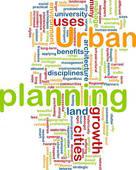More urban planners are embracing sustainability and strive to lessen the environmental impact on their designs. This is great news for those concerned about the environment. Here are some of the world’s leading examples of sustainability efforts in urban spaces.
Portland, Oregon

Seattle, Washington
Not far from Portland is another urban space that takes sustainability seriously. Seattle has taken steps to lessen its environmental footprint for years. Recently, the International Sustainability Institute focused on the city’s Pioneer Square neighborhood, where it aims to create a sustainable space with alleys that promote pedestrian activity and helps people connect. It also plans to seamlessly integrate a transportation network so that people can move effectively from one part of the city to the next without their own vehicle.
Bogota, Colombia
Not only North American cities are becoming environmentally-savvy. South America, too, recognizes the need to plan for sustainable space. Bogota took strides to improve public transportation by implementing a rapid bus system called TransMilenio. While some critics argue that it’s too expensive, that doesn’t change the fact this new system is usually crowded, even during non-peak times.
Hamburg, Germany
The European Commission awarded this northern city in Germany the title of European Green City in 2011. It has had an effective public transportation system for some time, but it’s expanding it further, creating a new light rail set to debut in 2014. It also has ambition plans to slash carbon emissions by 40 percent over the next decade and create more green spaces, such as parks and playgrounds.
Reykjavik, Iceland
Far up north you can find one of the world’s most sustainable capital cities. Much like the rest of Iceland, Reykjavik relies on renewable sources of energy such as geothermal and hydropower resources, which are plentiful in a place near so much volcanic activity. It also runs hydrogen buses to avoid limit its use of fossil fuels.
Copenhagen, Denmark
Most of the time, bikes outnumber cars on the streets of Copenhagen. This city has a strong biking culture and, for those who can’t or don’t want to bike, the city has a clean, reliable public transportation system that includes a metro, buses, and trains. Denmark is also a world leader in the use of wind farms, with about three percent of Copenhagen’s energy coming from wind technology.
As the world’s population increases and urban cities continue to grow in size and amount, many leaders are placing new importance on developing urban spaces that are sustainable. This planning helps ensure that high density areas are comfortable and healthy for the current population, as well as future generations.
Sarah Rawson is an avid blogger and independent researcher. She has recently been researching various online GIS programs and reporting her findings to various higher education blogs.

